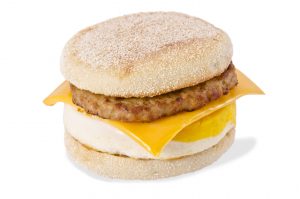 IKEA’s Billy bookcase—so popular that one is reportedly sold every 10 seconds—recently got even cheaper, at least for Russians. IKEA is holding a fire sale as the company closes its stores and exits the Russian market. The Swedish furnituremaker’s exit from Russia is just the latest in a string of actions by over 1,000 companies—including Disney, Goldman Sachs, IBM, McDonalds and Starbucks—that are curtailing operations in the country in response to the Russia/Ukraine conflict. As of June 2022, global companies fleeing Russia have reportedly racked up more the $59 billion in losses associated with their departure. Of course, this pales in comparison to the more than 10,000 civilian casualties and $600 billion in economic losses that Ukraine has suffered since the conflict began. But even though the corporate exodus from Russia for many companies is voluntary (and has even been used by some as a positive public-relations spin), Russia has threated to confiscate Russian-based assets of companies from countries that Russia considers hostile to its interests, and U.S. and EU sanctions may practically serve to prohibit some companies from operating in Russia, all of which highlights that additional risks lie ahead.
IKEA’s Billy bookcase—so popular that one is reportedly sold every 10 seconds—recently got even cheaper, at least for Russians. IKEA is holding a fire sale as the company closes its stores and exits the Russian market. The Swedish furnituremaker’s exit from Russia is just the latest in a string of actions by over 1,000 companies—including Disney, Goldman Sachs, IBM, McDonalds and Starbucks—that are curtailing operations in the country in response to the Russia/Ukraine conflict. As of June 2022, global companies fleeing Russia have reportedly racked up more the $59 billion in losses associated with their departure. Of course, this pales in comparison to the more than 10,000 civilian casualties and $600 billion in economic losses that Ukraine has suffered since the conflict began. But even though the corporate exodus from Russia for many companies is voluntary (and has even been used by some as a positive public-relations spin), Russia has threated to confiscate Russian-based assets of companies from countries that Russia considers hostile to its interests, and U.S. and EU sanctions may practically serve to prohibit some companies from operating in Russia, all of which highlights that additional risks lie ahead.
Articles Posted in Manufacturing
Missouri Throws Its Support to the “All Sums” Side of the Great Allocation Debate
What happens when you have a claim arising from circumstances that unfolded over many policy years—like environmental property damage or asbestos bodily injury claims? Which policies are triggered? How much coverage does each policy provide? Unsurprisingly, insurers and policyholders disagree on the answers. And courts across the country have been grappling with the issue for decades.
Some courts apply the “all sums” approach, which allows a policyholder to recover in full—subject to policy limits—from any insurer whose policy has been “triggered.” Other courts apply the “pro rata” approach, under which each triggered insurer must pay only a portion of the loss allocated to its policy periods. This is a closely watched issue among the insurance bar as it can dramatically impact the amount of a recovery depending on the contours of the policyholder’s insurance program.
Total Recall: Maximizing the Return on Product Recall/Contamination Insurance
 If you believe the news, I may be lucky to make it out of the driveway alive on my morning commute tomorrow. That microwave-ready triple egg breakfast sausage sandwich I stuff into an increasingly jowly face on my way to the car? Recalled. The overpriced technology-assisted car that practically backs itself out of the driveway as I struggle to wipe away the remnants of my savory breakfast? Recalled. Each morning brings fresh product recall announcements involving everything from contaminated sunflower seeds to exploding toilets. This year contamination recalls in Food and Drug Administration (FDA) regulated industries alone rose 167% from the first quarter to the second quarter. The exponential rise of product recalls stems from a convergence of factors, including increased governmental regulation and more extensive and technologically sophisticated testing of products.
If you believe the news, I may be lucky to make it out of the driveway alive on my morning commute tomorrow. That microwave-ready triple egg breakfast sausage sandwich I stuff into an increasingly jowly face on my way to the car? Recalled. The overpriced technology-assisted car that practically backs itself out of the driveway as I struggle to wipe away the remnants of my savory breakfast? Recalled. Each morning brings fresh product recall announcements involving everything from contaminated sunflower seeds to exploding toilets. This year contamination recalls in Food and Drug Administration (FDA) regulated industries alone rose 167% from the first quarter to the second quarter. The exponential rise of product recalls stems from a convergence of factors, including increased governmental regulation and more extensive and technologically sophisticated testing of products.
 Policyholder Pulse
Policyholder Pulse


